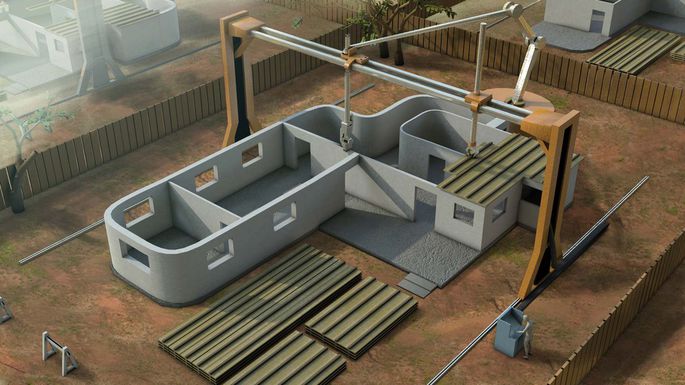The 3D printing market is doing well. The sector is growing rapidly, and the market is expected to grow by 25% per year until 2020(1 ): a development driven by lower prices and improved technologies. 3D printing is increasingly used, especially in the industrial sector, but does this concern all regions of the world? What about France?
(1 ) Source: Xerfi study " 3D printing in France and around the world - Applications, challenges and market outlook by 2020, competitive landscape and player strategy ".

The overall state of the market
According to AFPR and the 2013 Wohlers Report, the United States leads the way with more than 40% of industrial 3D printing systems sold worldwide, followed distantly by Japan (9.7%), Germany (9.4%), China (8.7%). Italy and the United Kingdom follow (4%), and France (3%).
The largest market is therefore the United States, mainly because the historical leaders in the 3D printer sector are located there, such as 3D Systems, Stratasys, etc. The country has focused on equipment for working with thermoplastics, unlike Europe, which has focused more on metal 3D printing.
In Europe, the leading country is Germany, which has positioned itself in metal fabrication equipment thanks to the presence of five of the largest metal printer manufacturers (EOS, SLM, Concept Laser, Realizer and Trumpf) in the country. Germany has strong capabilities in manufacturing advanced 3D printing machine tools for important industries such as automotive. The country has never hidden its ambitions as a manufacturer in additive manufacturing and is already exporting its technologies abroad.
France's positioning
France seems to be lagging behind in the 3D printing sector, particularly because of the lower level of investment in this technology. But the way of thinking has been different and horizontal: the trend in France has been to develop service bureaus (producers and machine owners), with workshops buying 3D printers to complement their traditional manufacturing machines, rather than entire factories dedicated to 3D printing as in the US or Singapore.
France has no reason to be ashamed of its situation, with the presence of strong players such as Prodways, but also manufacturers specializing in metal such as BeAM or ceramics such as 3D Ceram. The same is true for materials, where thanks to a well-developed chemical industry, there is interest in the development of materials for additive manufacturing.
In addition, it must be borne in mind that this is only one part of the 3D printing sector, namely the construction of machines and the production of consumables. In terms of the actual use of the technology, France is representative of what is happening around the world. Indeed, there are regions that, depending on their industrial activity, have larger installed bases than others, such as the United States, but the 3D technologies used are the same everywhere (stereolithography, laser powder sintering, etc.). 3D printing is also developing in accordance with the needs of the industries present in each country. This is the case, for example, for Turkey, which has a highly developed jewelry industry and has integrated the technology to work with wax.
" The development of 3D printing in a country is not so much related to its size, nor to the number of machines that can be found, but rather to the industries present in the country in question. The countries that use 3D printing the most are those that have a strong industrial culture and that find in additive manufacturing a new means of production that is faster and less expensive," explains Quentin Kiener, President and Founder of 3D PROD.

